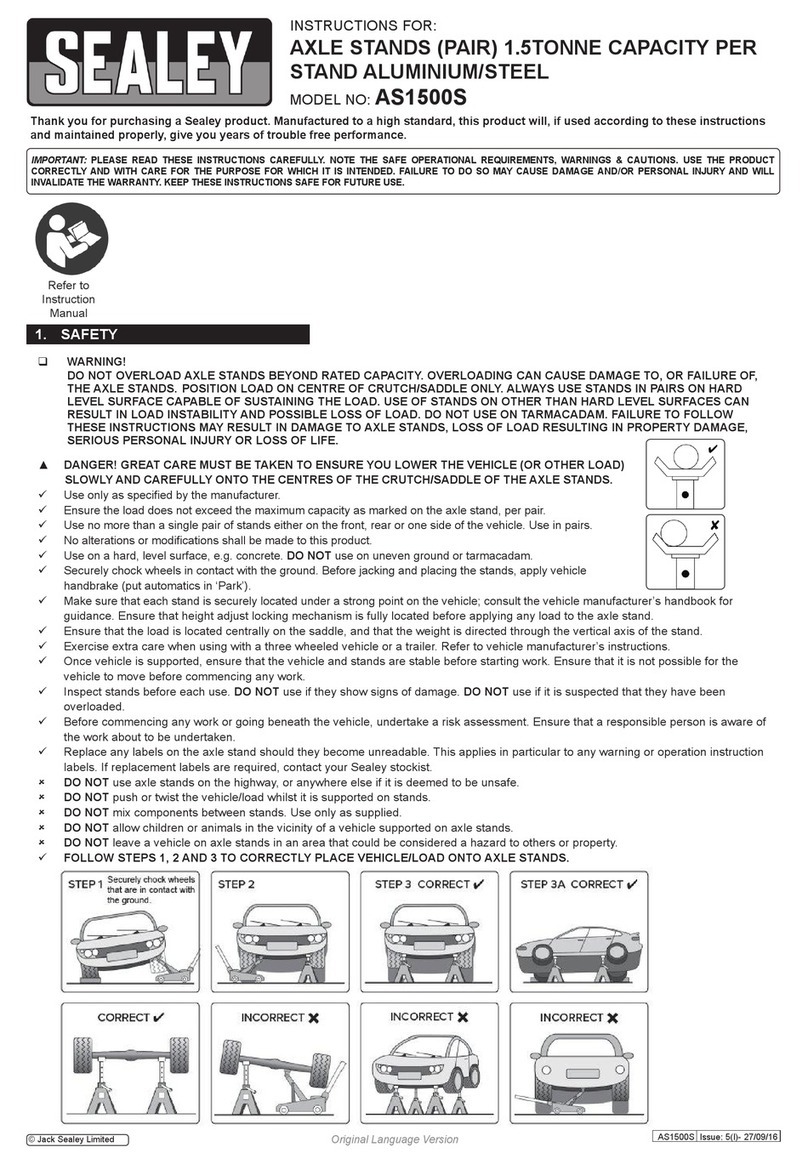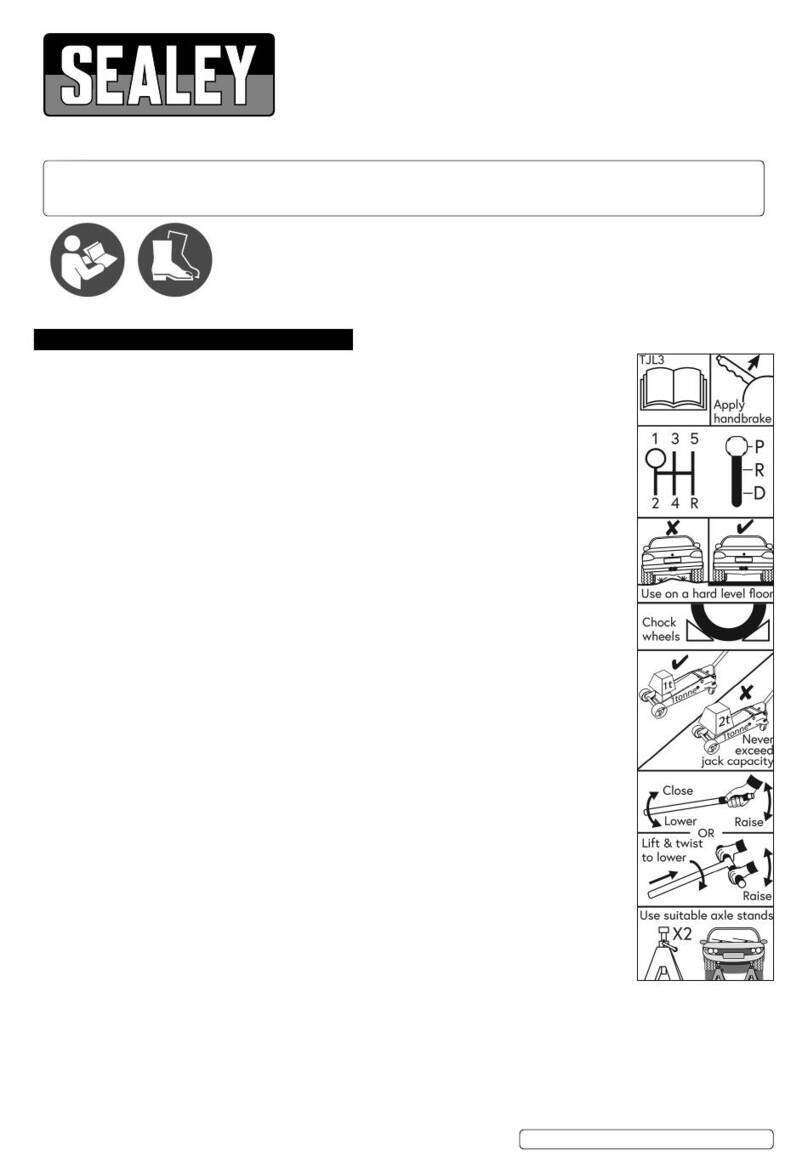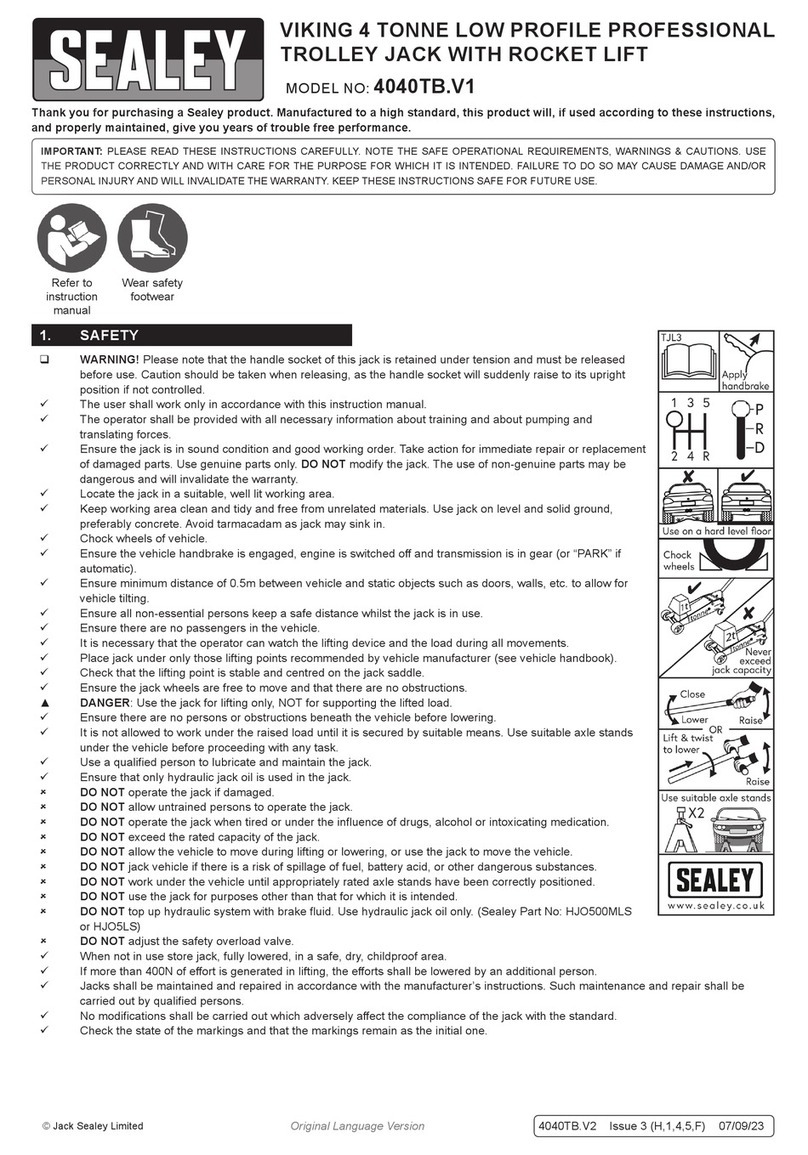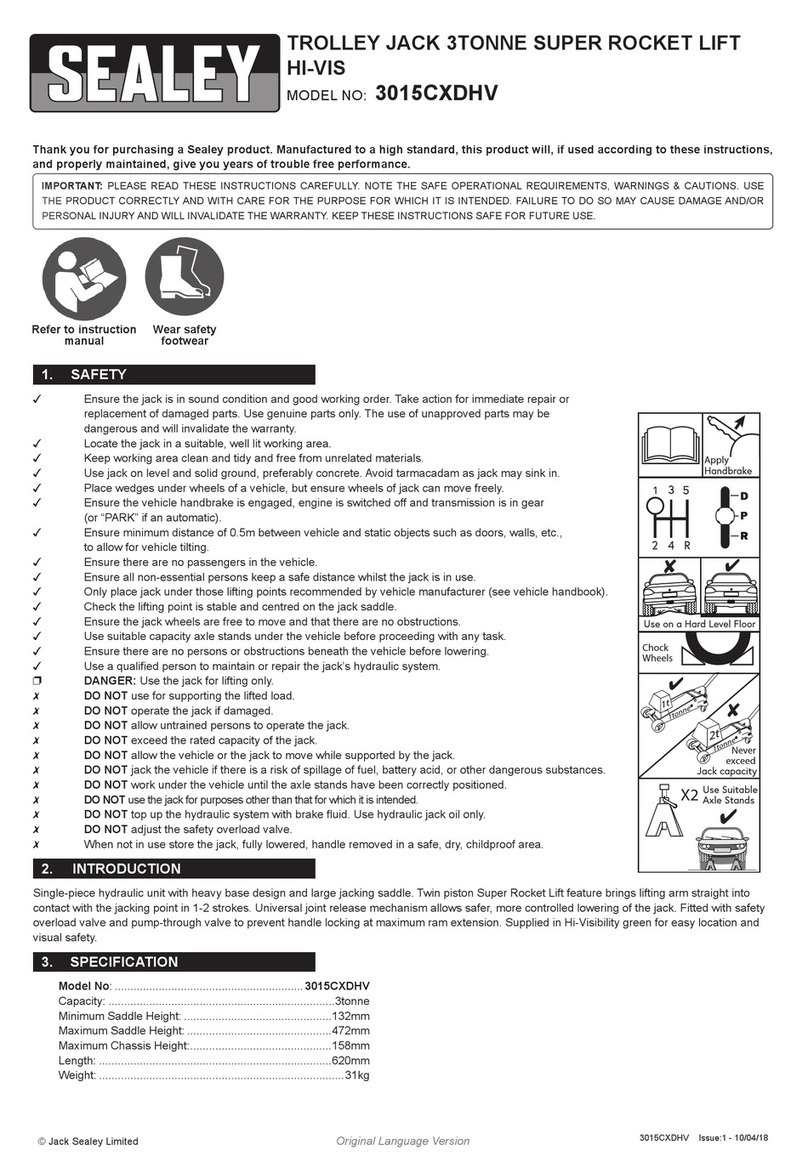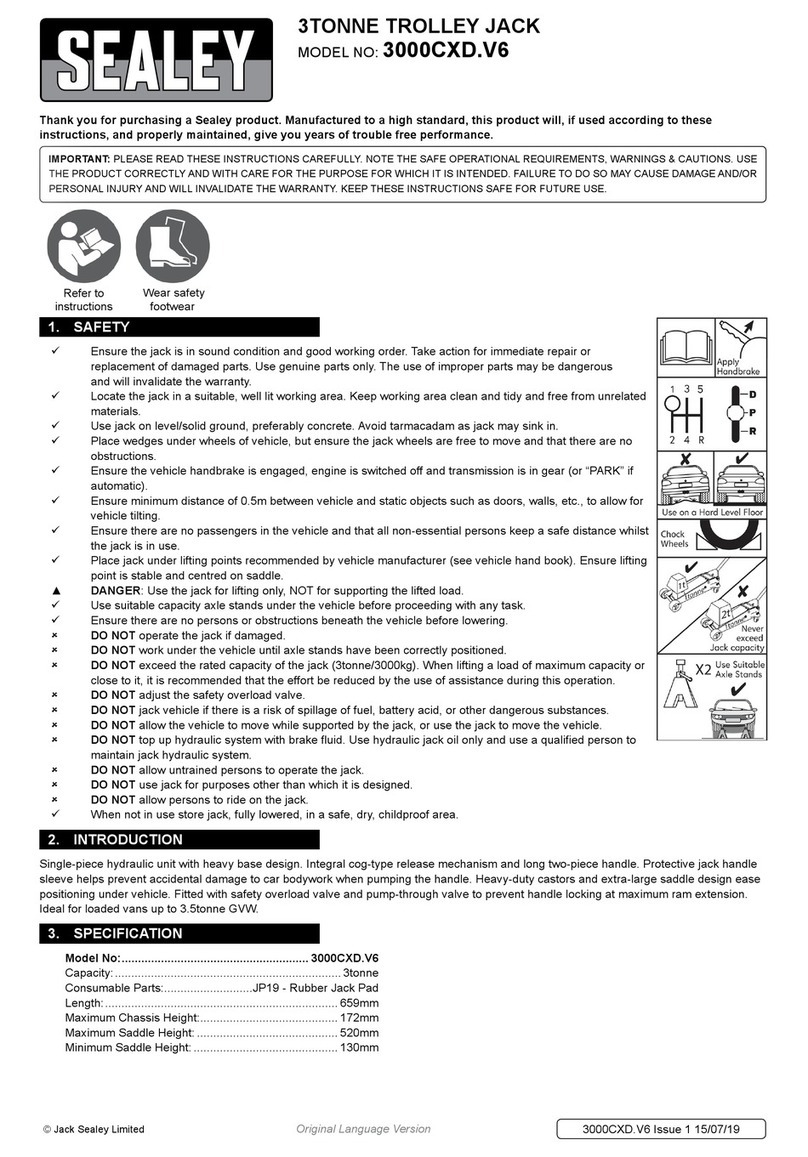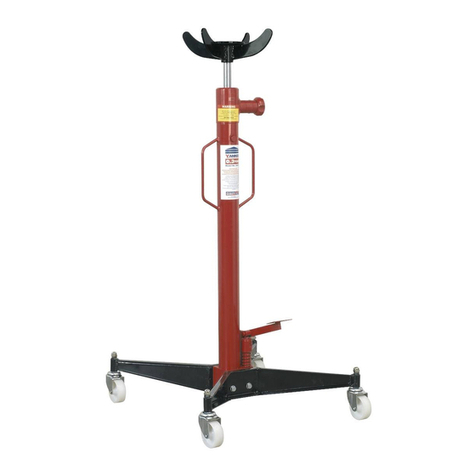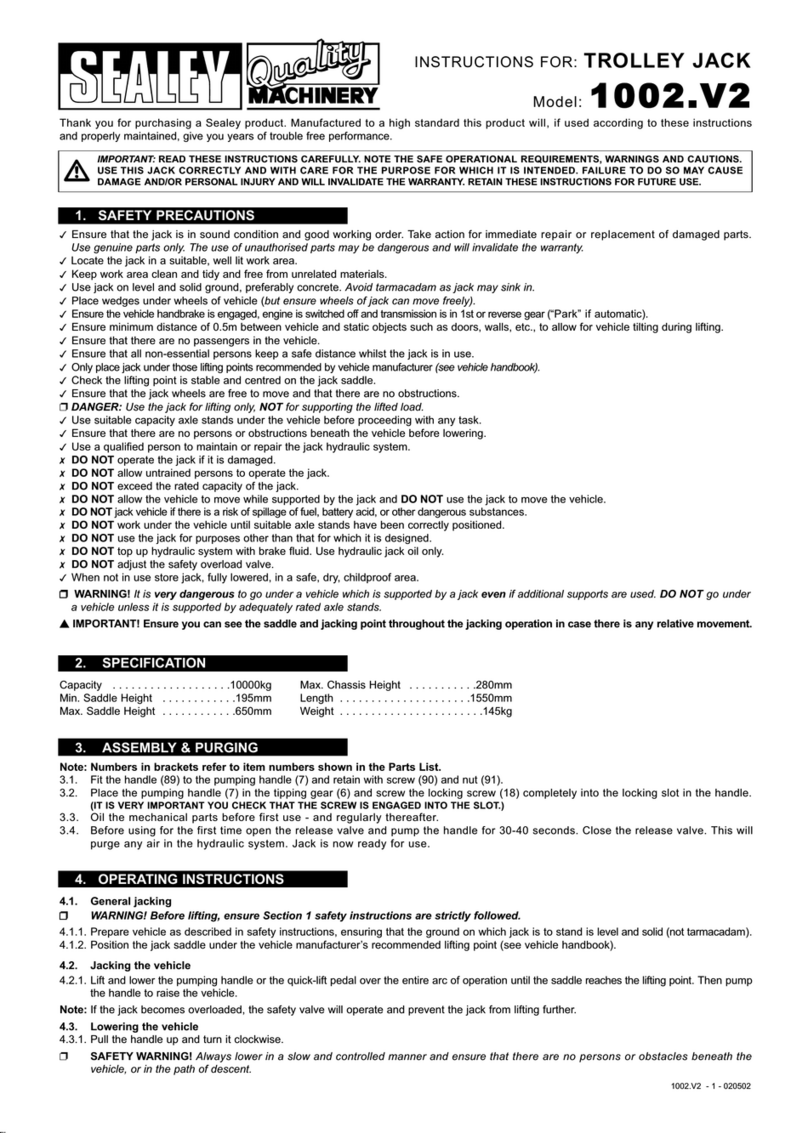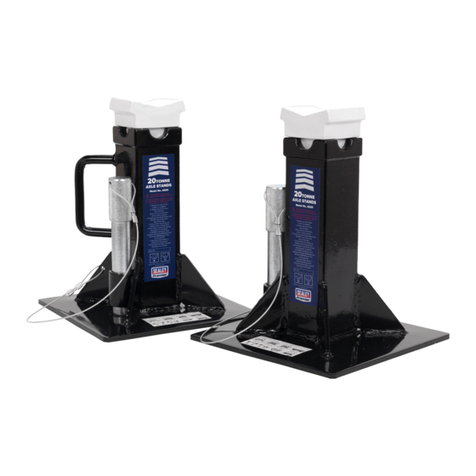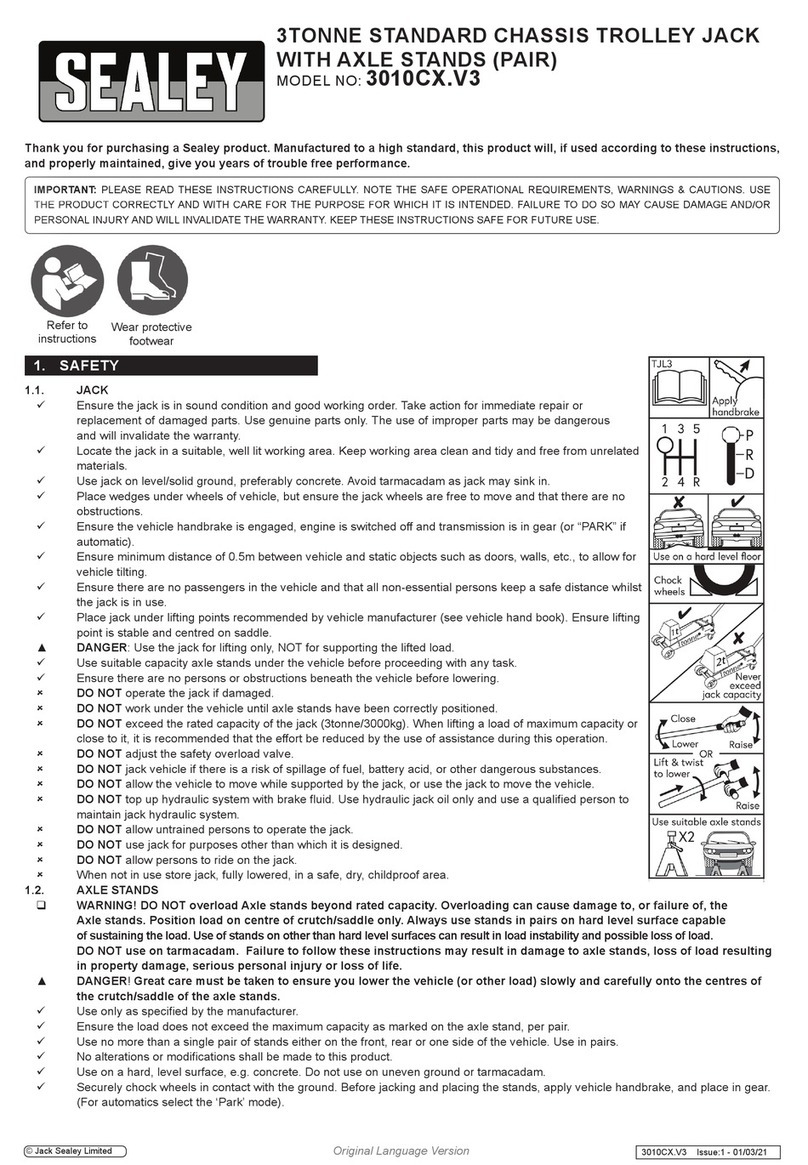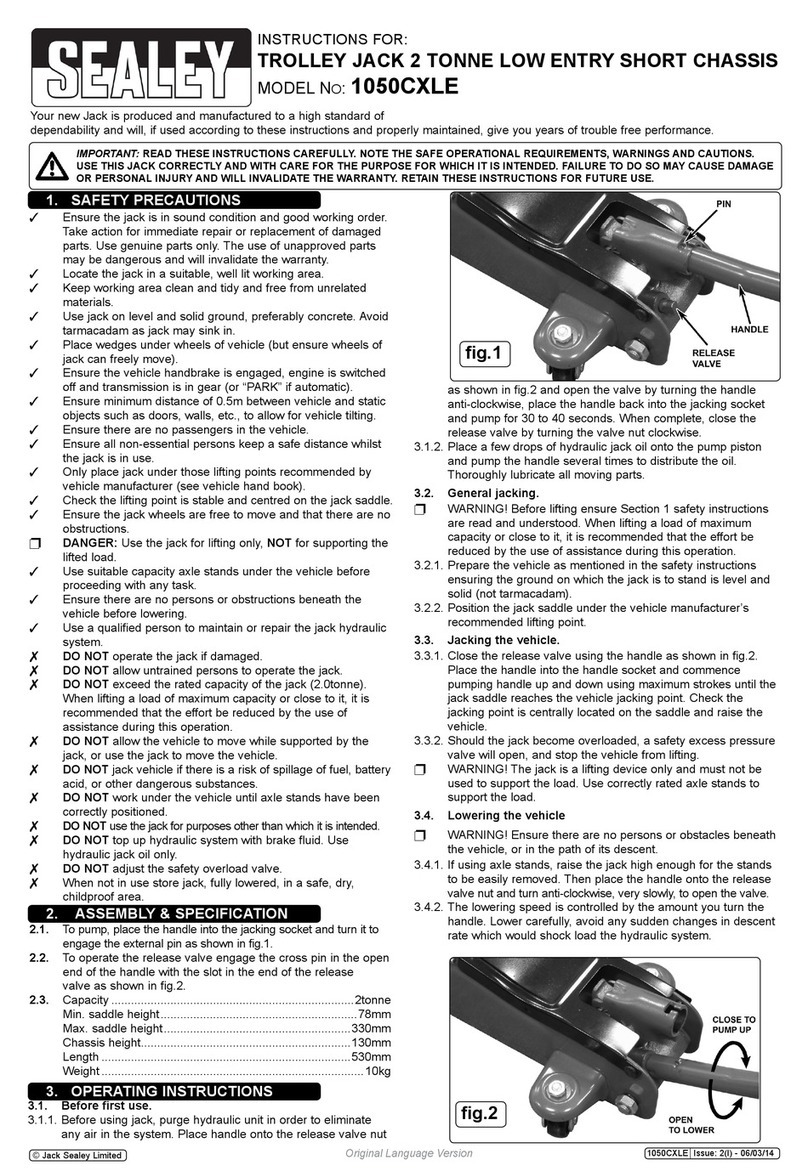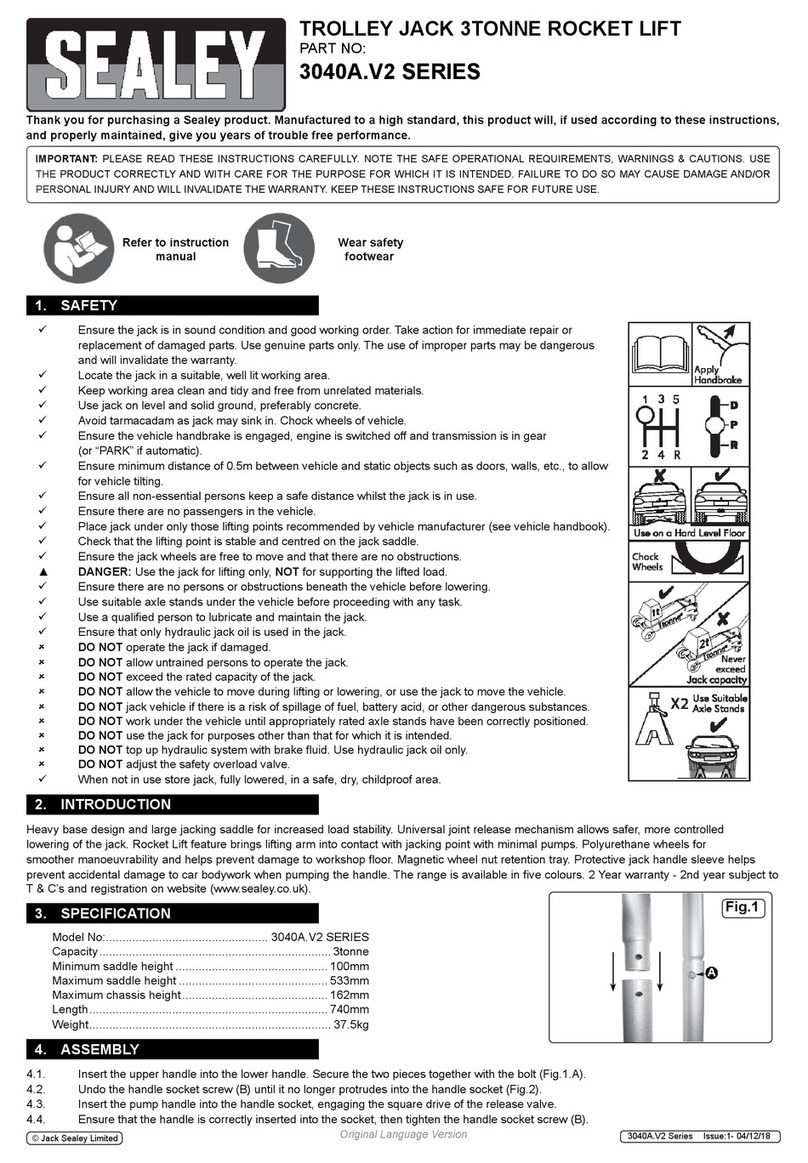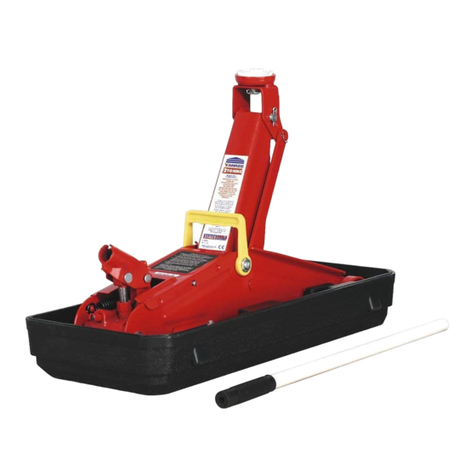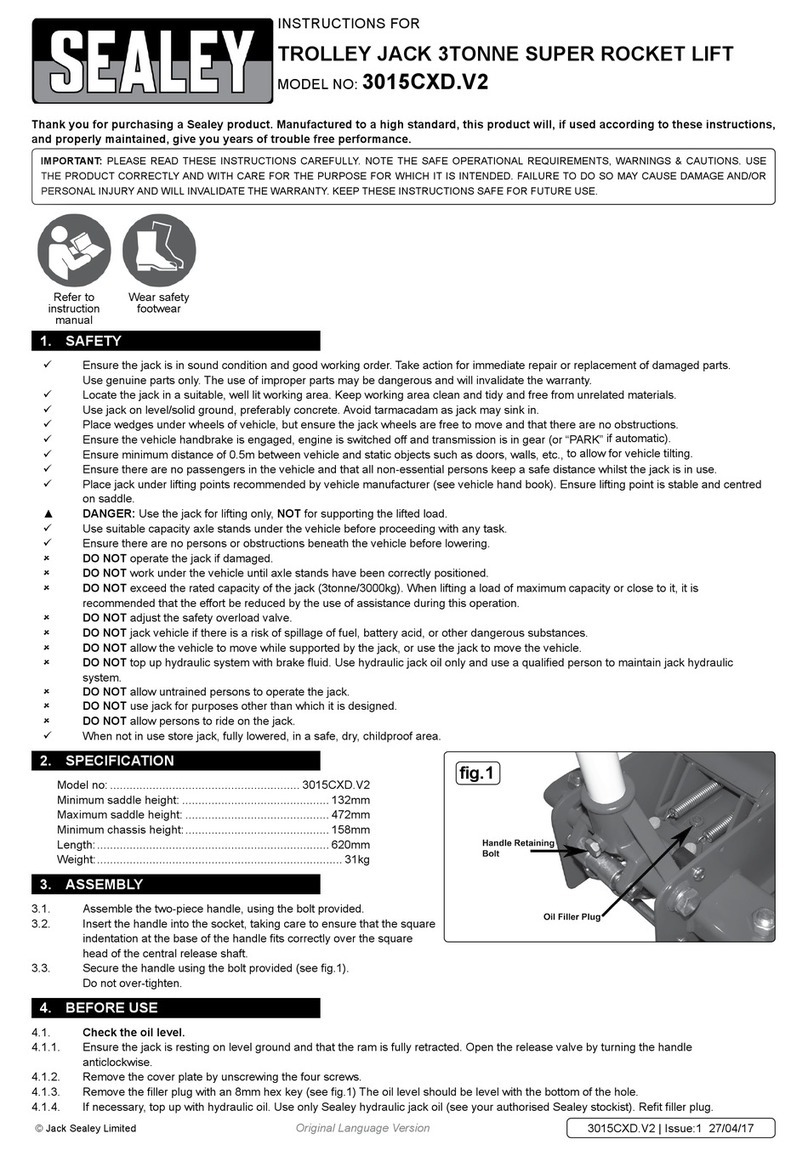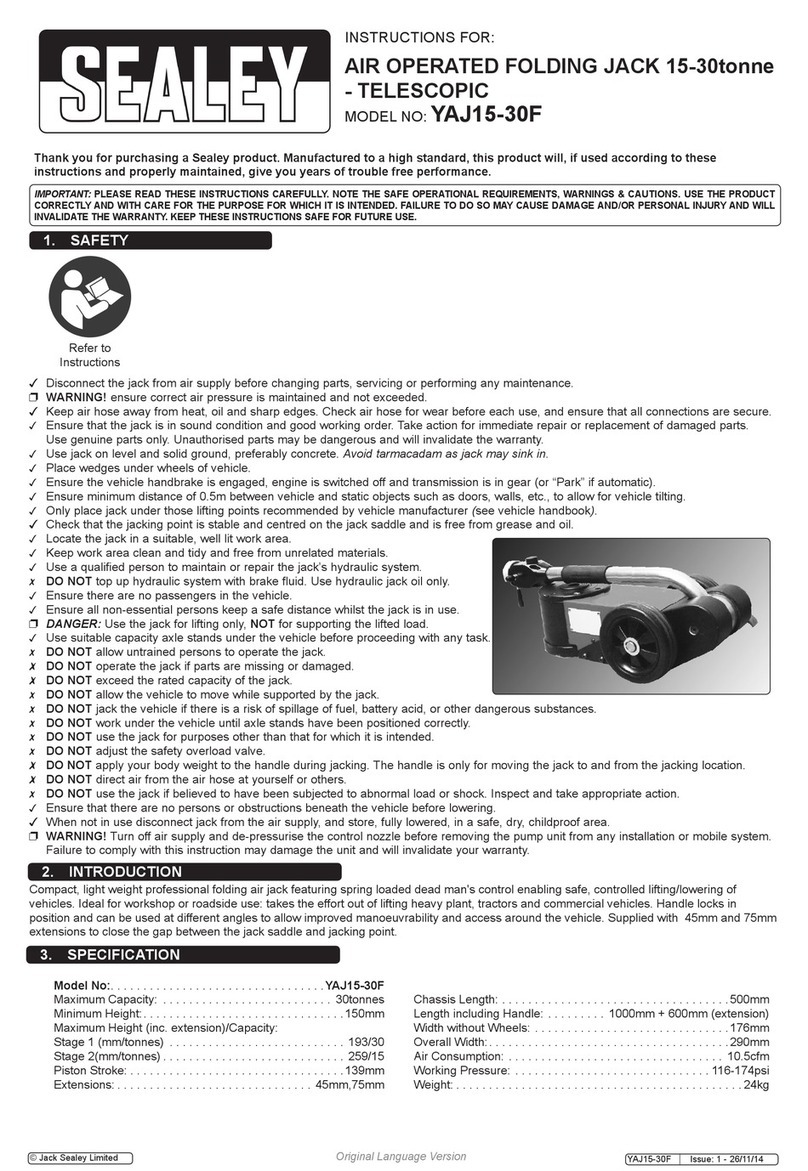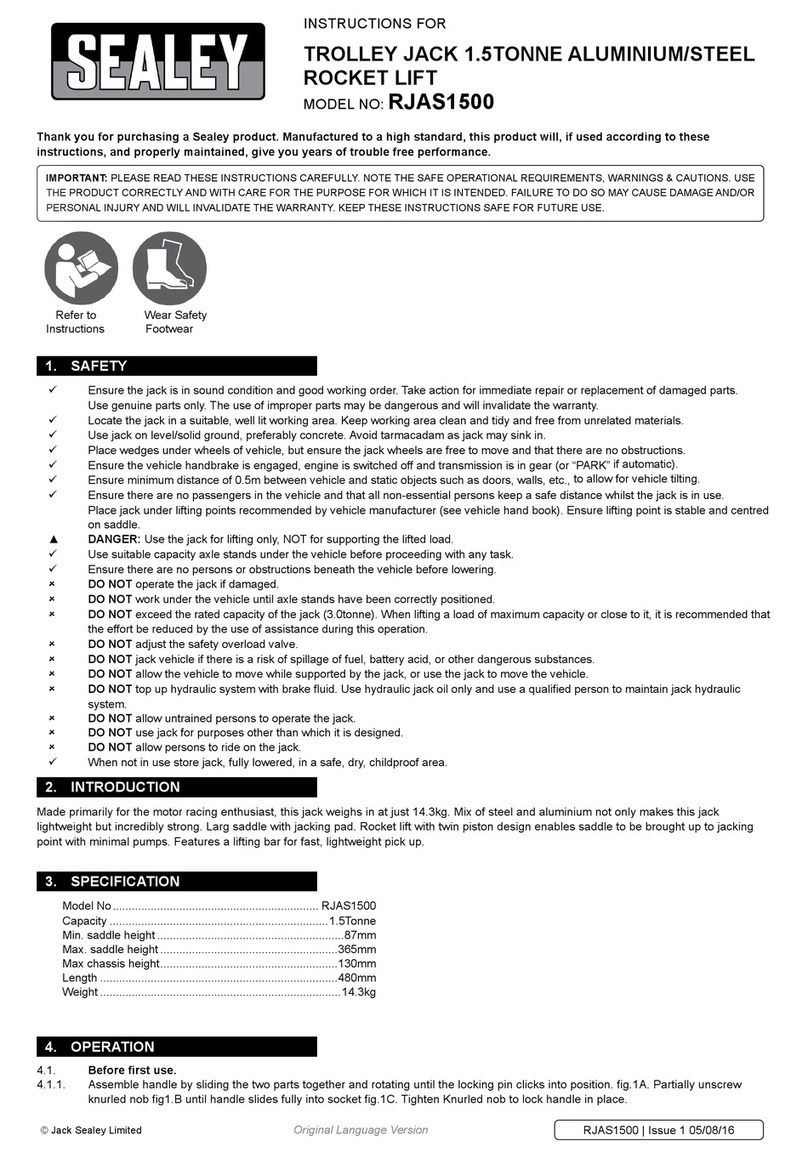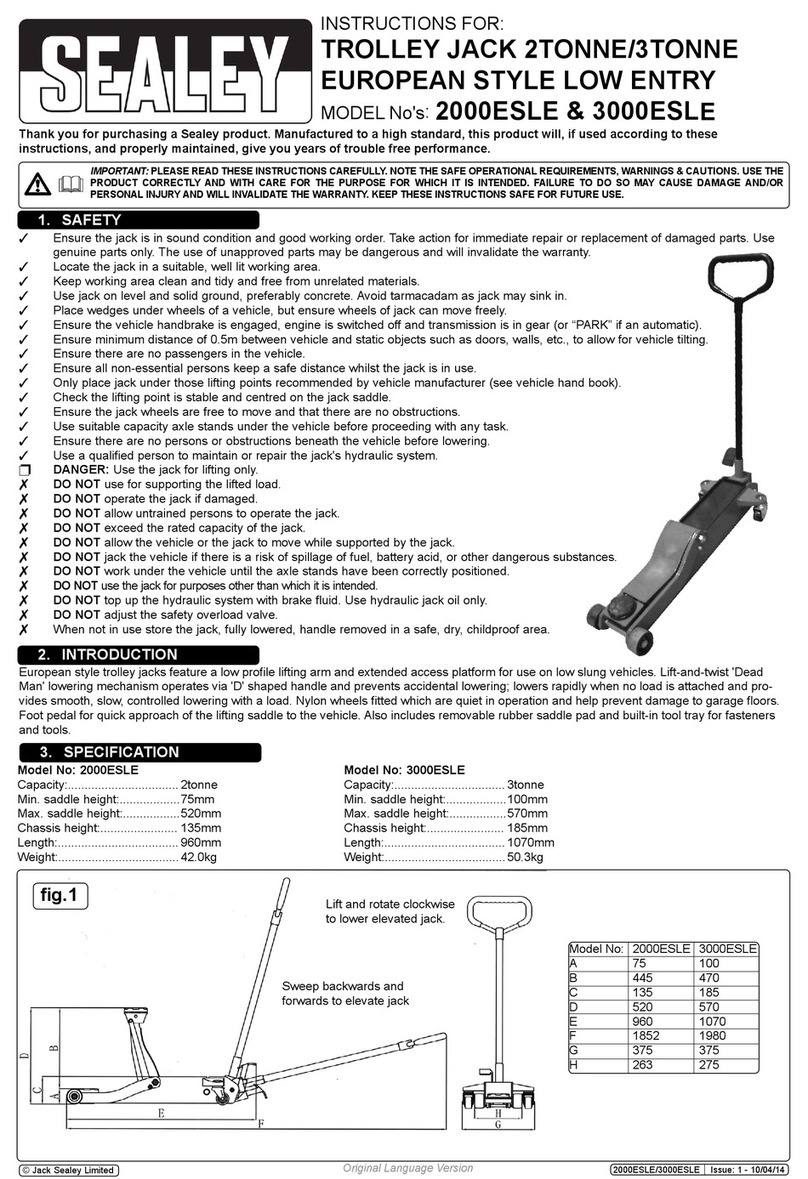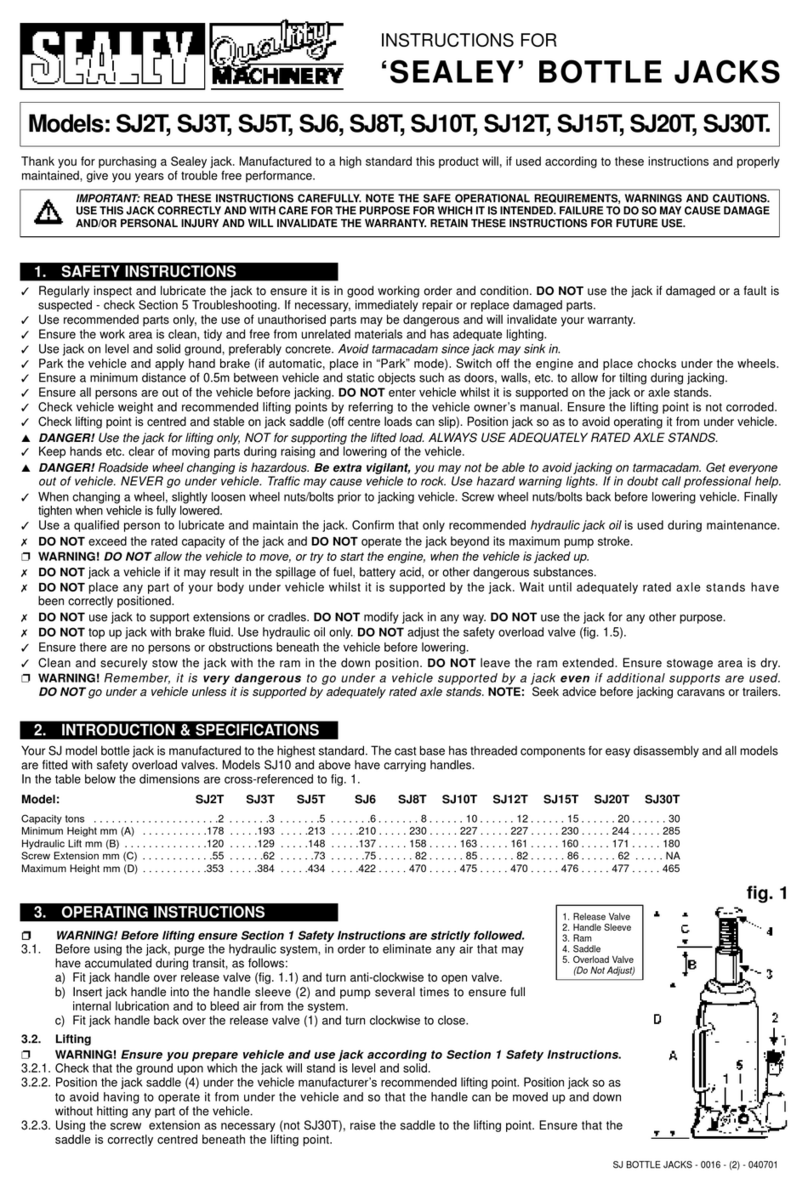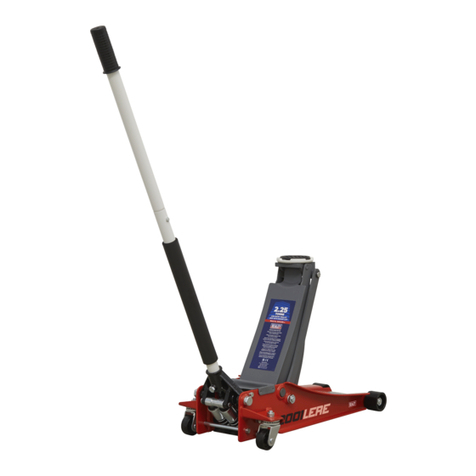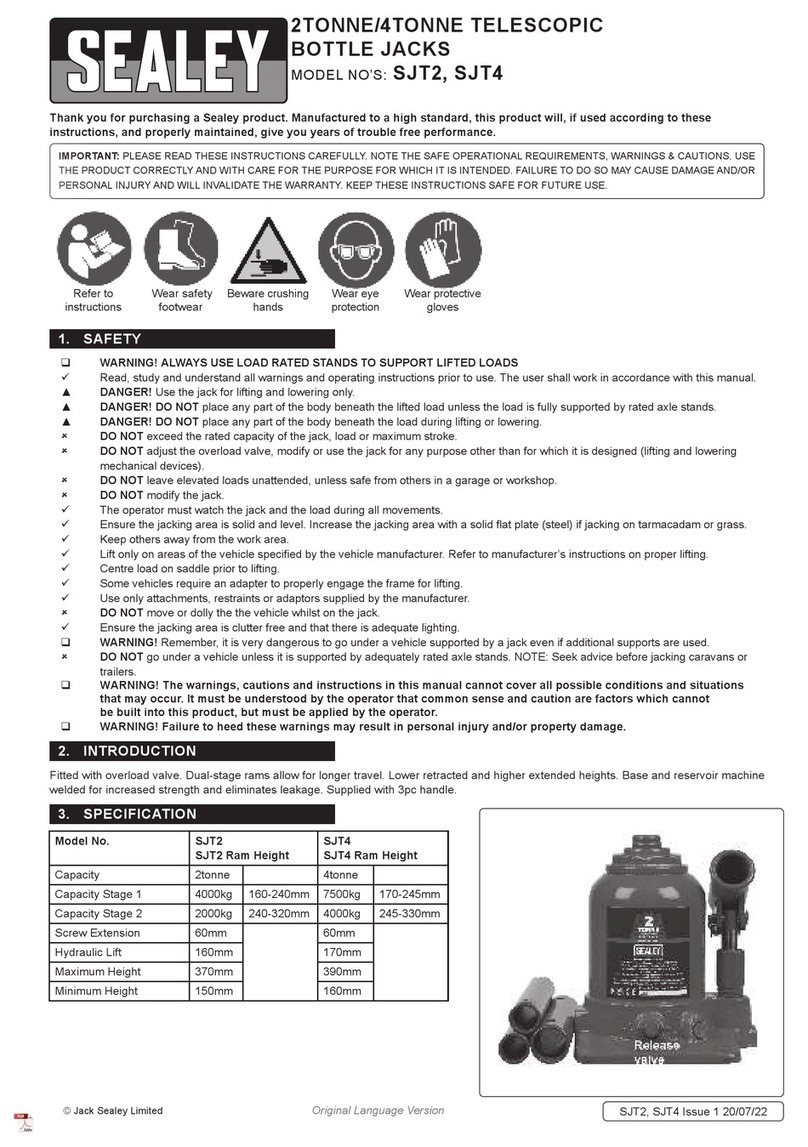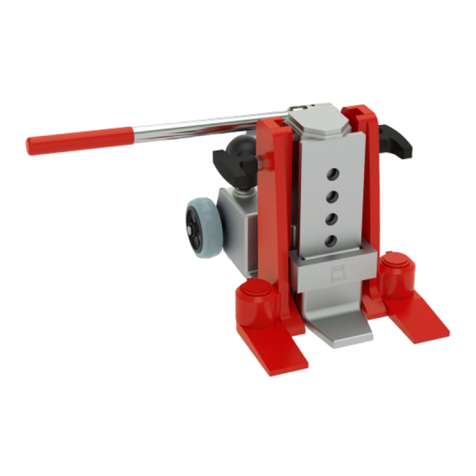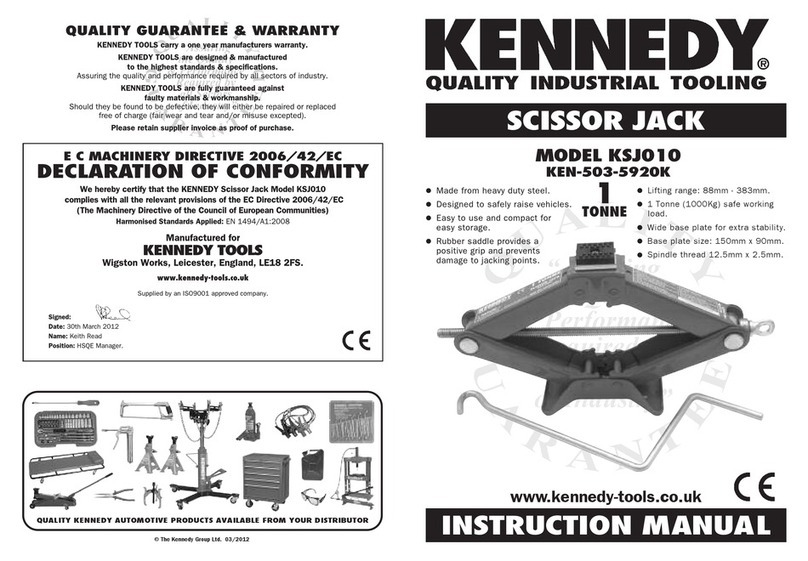
4. OPERATION
4.1. Beforerstuse.
4.1.1. Assemble the handle by lining up the holes in the two-piece handle and fasten with the assembly screw.
4.1.2. Loosen location bolt at the back of the handle base. Insert the jack handle and tighten the bolt.
4.1.3. Before using jack, purge the hydraulic unit in order to eliminate any air in the system. Open the valve by turning the handle
anti-clockwise (fig.1), and pumping 8 or 9 times. When complete, close the release valve by turning the handle fully clockwise (fig.1).
4.1.4. Place a few drops of hydraulic jack oil onto the pump piston and pump the handle several times to distribute the oil. Thoroughly
lubricate all moving parts.
4.2. Preparation
WARNING! Before lifting ensure Section 1 safety instructions are
read and understood.
4.2.1. Prepare the vehicle as mentioned in the safety instructions ensuring
the ground on which the jack is to stand is level and solid (not
tarmacadam) and use chocks under wheels of vehicle.
4.2.2. Position the jack saddle under the vehicle manufacturer’s
recommended lifting point.
4.3. Jacking the vehicle.
4.3.1. Turn the handle clockwise to close the release valve (fig.1) and
commence pumping handle up and down until the jack saddle
reaches the vehicle jacking point. Check the jacking point is centrally
located on the saddle and continue to pump the handle to raise the
vehicle.
4.3.2. Should the jack become overloaded, a safety excess pressure valve
will open and stop the jack from lifting.
WARNING! The jack is a lifting device only and must not be used to support the load. Use correctly rated axle stands to support the
load.
Lowering the vehicle.
WARNING! Ensure there are no persons or obstacles beneath the vehicle, or in the path of it’s descent.
Raise the jack high enough for the axle stands to be easily removed. Then turn the handle slowly anti-clockwise to open the release valve
(fig.1).
The lowering speed is controlled by the amount the release valve is opened. Lower carefully, avoiding any sudden changes in descent
rate which could shock load the hydraulic system.
5. MAINTENANCE
5.1. When the jack is not in use, the ram and the handle socket should
be in their lowest positions to minimise corrosion.
5.2. Remove the handle to render the jack inoperative.
5.3. Keep the jack clean and lubricate all moving parts on a regular
basis, pump grease into the grease nipple (fig.2).
5.4. Before each use, check for broken, cracked, bent, or loose parts, or
any visible damage to ram, pump, saddle, lifting arm, frame and all
parts including nuts, bolts, pins and other fasteners. If any suspect
item is found remove jack from service and take necessary action
to remedy the problem.
DO NOT use the jack if believed to have been subjected to
abnormal load or shock load.
5.5. Periodically check the pump piston and piston rod for signs of
corrosion. Clean exposed areas with a clean oiled cloth.
5.6. After one year the oil should be replaced in order to extend the life
of the jack. Use hydraulic jack oil only.
IMPORTANT: Only fully qualified personnel should attempt
hydraulic maintenance or repair.
5.7. To check the hydraulic oil level, fully lower the jack and the handle and remove the oil filler plug (fig.2). The correct oil level should
be approximately 5mm below the filler opening. If oil level is low, fill as required. Make sure that dirt is not allowed to enter the hydraulic
system. Carefully pump unloaded jack 5 or 6 times to expel any air and then refit oil filler plug.
5.8. NOTE: Use a good quality hydraulic jack oil, such as SEALEY HYDRAULIC JACK OIL.
WARNING: DO NOT use brake fluid, or any fluid other than hydraulic jack oil, as this may cause serious damage to the jack and will
invalidate the warranty!
IMPORTANT: NO RESPONSIBILITY IS ACCEPTED FOR INCORRECT USE OF THIS PRODUCT.
Owing to their size and weight, hydraulic products should ideally be repaired by local service agents. we have service / repair agents in
most parts of the UK. Before returning your product please call our technical helpline on 01284 757505 for advice and trouble shooting
guidance.
If the jack is under guarantee please contact your stockist.
5.9. De-commissioning the Jack
5.9.1. Should the jack become completely unserviceable and require disposal, draw off the oil into an approved container and dispose of the
jack and the oil according to local regulations.
g.1
g.2
3000CXD.V5 Issue:1 - 13/12/17
Original Language Version
© Jack Sealey Limited
